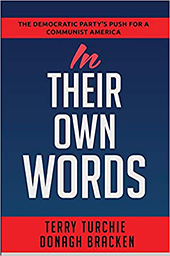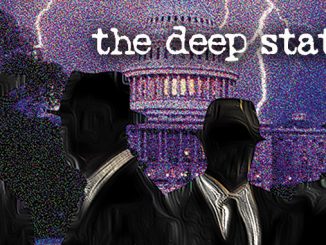
By Mark Anderson
Maricopa County, Ariz. has embarked on what appears to be a thorough “forensic audit” of the county’s voting hardware and software—manufactured by the Dominion Voting Systems company, whose name was connected to suspected election fraud in a number of states in November 2020. Dominion has denied these claims and has launched lawsuits against any group claiming their systems are anything but completely accurate.
Dominion is one of the “big three” electronic voting machine companies, the other two being ES&S of Omaha, Neb., and Hart InterCivic in Austin, Texas. Critics see the “big three” as a private vote-counting syndicate that convinces local officials to accept their voting systems, whose thievery can allegedly happen undetected, despite the best efforts of local officials to prove the systems are trustworthy.
Nevertheless, the audit is being carried out “to allay concerns raised by some constituents about the integrity of the November 2020 election,” according to the Maricopa County Board of Supervisors, which on Jan. 27 voted unanimously to proceed with the audit. Without a hint of doubt, county officials insist the audit will “accurately determine whether the Dominion machines used by the county last November counted the votes correctly, and whether they were tampered with or hacked in any way.”
County officials stated in online press releases that “as an added layer of assurance, the county will hire two independent firms certified by the U.S. Elections Assistance Commission, to each independently audit the tabulation equipment: Pro V&V [of Huntsville, Ala.], and SLI Compliance [of Wheat Ridge, Colo.].” The online backgrounds of both companies are sketchy at best. A “Ryan Cobb” is the sole name listed for Pro V&V’s executive team, and a “Diane Gray” is listed as its single board member at Pitchbook.com. SLI’s information, like that of Pro V&V, is short on personnel data but big on technical qualifications.
“While I’m confident we ran good elections, I have been passionate about doing this audit,” said Board Supervisor Clint Hickman. “Every election-related decision and safeguard this board has made over the past year has had voter and election integrity in mind. The . . . forensic audit of election equipment will be no different, and I hope it puts to rest the notion that somehow we’ve got something to hide.”
The audit is described as “a multi-layer review that dives into the tabulation system’s software and hardware,” consisting of analyzing “hacking vulnerability,” “verifying no malicious malware was installed,” and testing that “tabulators were not sending or receiving information over the internet.”
One of those testing firms “will also perform a logic and accuracy test of the county’s tabulation equipment to ensure it accurately counted ballots and confirm that no vote switching occurred,” a county press release added. It also noted: “Throughout the election, political party observers were present at every vote center, followed ballot courier routes and observed signature verification, ballot processing, and every minute of tabulation. All rooms with ballots were under 24-7 cameras.”
Compared to most municipalities, this audit gives the impression that it covers all the bases. What’s curious, however, is that while the county noted that all wiring is kept visible to ensure that no equipment is connected to the internet, the tabulation equipment “is instead routed directly to a secure server, which is behind glass and on display for public view.”
And that’s where things get interesting. As longtime vote fraud researcher Jim Condit Jr. has pointed out, the “hack-ability” of the machines is, at best, a secondary matter. The crucial thing to keep in mind is that the source code that runs the tabulators and tells them how to count the votes has traditionally been kept off limits to inspection by election officials. “What could be more meaningless than having vote observers watch a computer when you cannot tell what’s going on inside of it?” Condit remarked.
AFP called Maricopa County Feb. 2, to see if the source code is within the purview of the forensic audit. In the communications department of the Board of Supervisors, to which this writer was directed, a staffer named “Fields” said he understands the source code is included in the forensic audit.
Condit replied that the outcome of the audit will hinge on whether the source code being examined is the same one used in the November election, not to mention whether the origins and authenticity of all of Maricopa’s mail-in ballots is definitively known. It’s also a question of how securely the voting machines, mail-in ballots and memory cards were stored—away from any chance of manipulation—in the three-month period from the Nov. 3 election until the audit began Feb. 2, with a second phase starting Feb. 8.

Finally, as Condit himself noted in a 1996 Chronicles magazine article—quoting the Colliers brothers, who wrote the influential book Votescam: The Stealing of America, for which Condit contributed research: “The computers [used] in November 1988 held in their inner workings small boxes that contained secret codes that only the sellers of the computers could read. The programs, or ‘source codes,’ were regarded as ‘trade secrets.’ So, why can’t the public [including election officials] know what those secret source codes instruct the computer to do?” Notably, that 1992 book was the culmination of 25 years of research.
Mark Anderson is AFP’s roving editor. Email him at [email protected].






